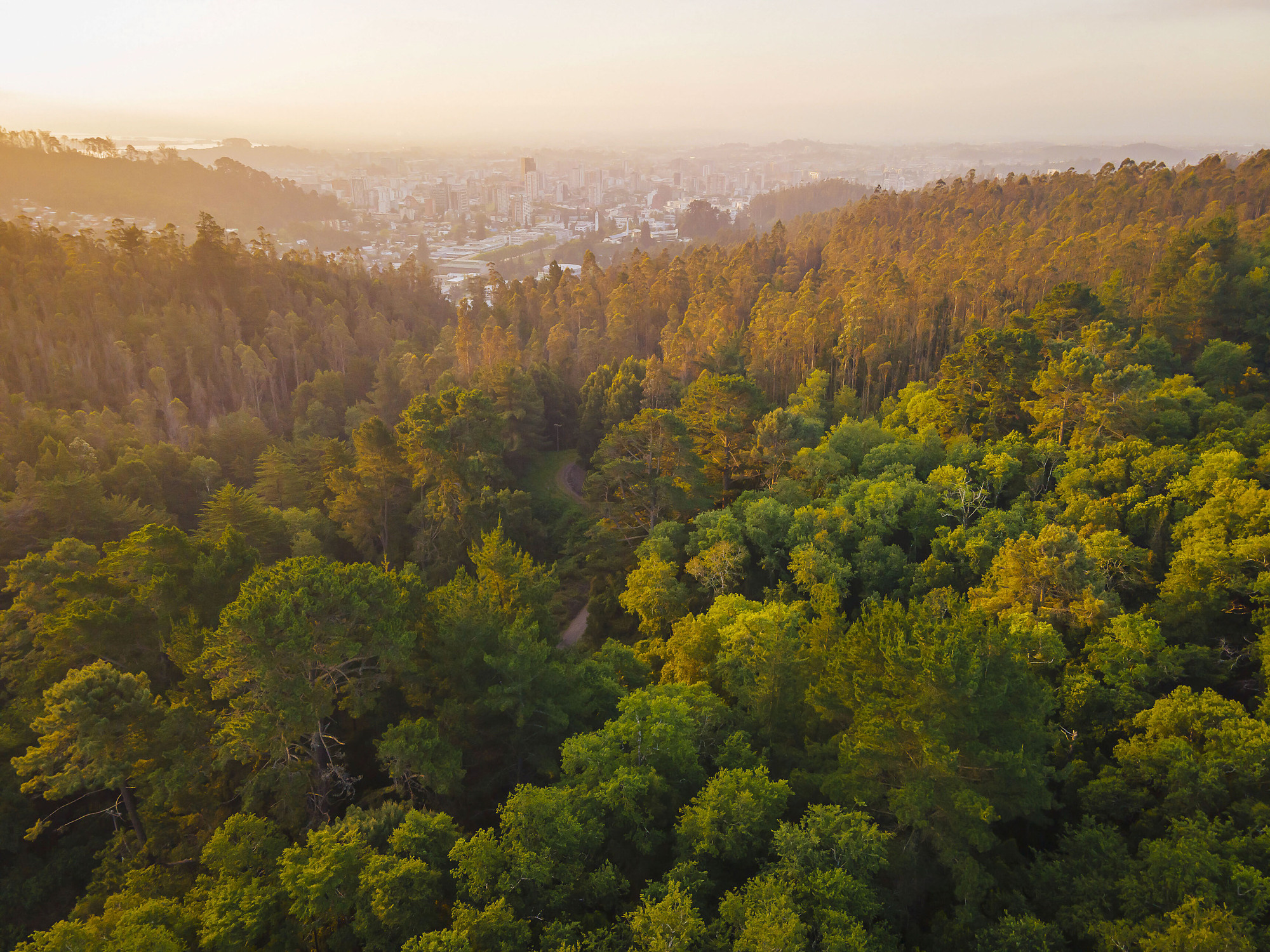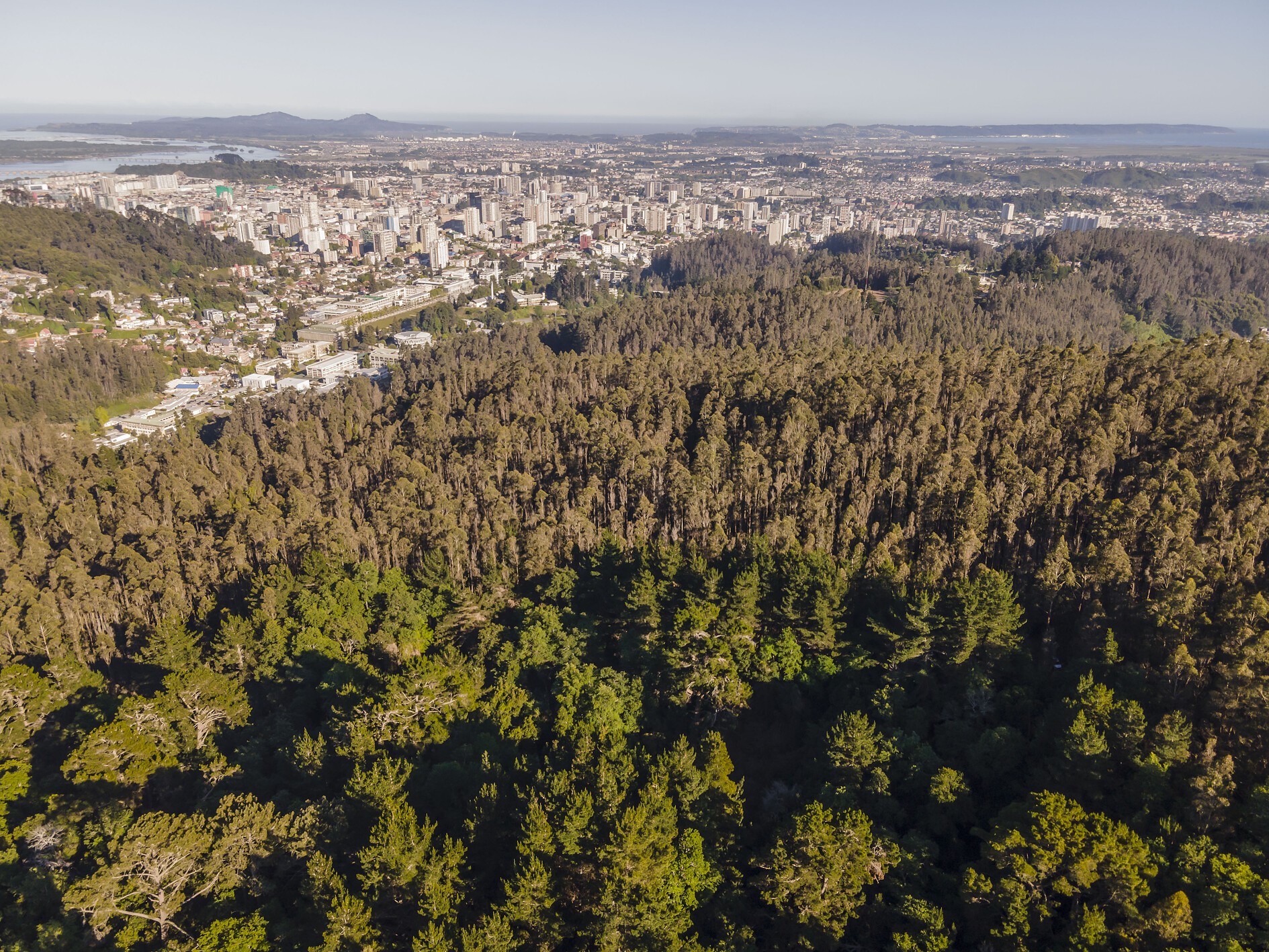Initiation of Ex Situ Conservation at Campus Naturaleza

The University of Concepción will allocate 6 hectares to implement the first collection for ex situ conservation of threatened Chilean species in the Campus Naturaleza project.
No one knows if an ark of Noah will be needed. While the biblical figure or archetype sparks debate, the presence of an artifact that allows for the preservation of the threatened is an aspect present in the human mind since time immemorial.
Pressure on fragile ecosystems exists and is increasing due to global climate crisis and other factors associated with human beings. In this context, ex situ conservation emerges as a concrete tool that allows the preservation of threatened plant species, in the form of a botanical garden or living collections of species at risk of extinction.
The Campus Naturaleza project at the University of Concepción will implement, in the mid-term, 6 hectares of ex situ conservation. This action will complement in-situ conservation in 25 hectares of relict ecosystems of Deciduous Forest of Concepción, aquatic ecosystems, as well as future ecological restoration efforts, human well-being, and integral health, among other aspects.
Dr. Cristian Echeverría L, Director of the Campus Naturaleza project at the University of Concepción, explains that the first species to inhabit the ex situ conservation areas will be the three species of the Nothofagus genus threatened in South America and endemic to Chile. These are Nothofagus alessandrii (ruil), endangered, N. glauca (hualo), and N. macrocarpa (roble de Santiago), vulnerable, according to the International Union for Conservation of Nature (IUCN) and its information platform, the most comprehensive and exhaustive about global biodiversity to date.
Dr. Echeverría, who is also Director of the Landscape Ecology Laboratory (LEP UdeC), explains that they worked on the World Red List of Nothofagus, in conjunction with the Botanic Gardens Conservation International (BGCI). These global evaluation efforts "revealed the urgent need to conserve these species that are seriously threatened."
Eucalyptus planting, adjacent to the main relict of Deciduous Forest of Concepción, which will be the first to be harvested.
Due to international funding from the Franklinia Foundation in Switzerland and in partnership with the University of Chile, Forest Institute (Infor), Catholic University of Maule, University of Talca, INIA, Club del Árbol de Talca, INIA, and BGCI, the Conservation and Restoration of Threatened Nothofagus Species in South America project is being executed. This initiative is led by the University of Concepción, through the Landscape Ecology Laboratory.
Safeguarding genetic diversity
The director of the Campus Naturaleza project expresses that the objective of the international initiative is to develop successful conservation actions. In this framework, "our House of Studies has allocated six hectares currently covered by a eucalyptus plantation to convert into the first successful collection of threatened Nothofagus from Chile. All the knowledge gathered around Franklinia, which is a collaborative work of several Chilean institutions, will be applied here from 2024 to establish site preparation and then, by mid-2024, fulfill the aspiration to initiate the first phase of ex situ conservation."
Similarly, from the Botanic Gardens Conservation International (BGCI) in England, the Projects Manager for Plant Conservation in the Latin America and Caribbean region, Noelia Álvarez de Román, points out that "ex situ plant collections play a very important role in biodiversity conservation in the context of anthropogenic pressure, habitat alteration, and climate change. Unfortunately, and increasingly, there are cases where the only way to prevent the extinction of a species is through ex situ conservation."

Regarding Chile's specific case, the conservation project aims to preserve the genetic diversity of the three endangered Nothofagus species through ex situ collections (seed banks and living collections). "These collections will also support in situ conservation efforts, including ecological restoration activities in degraded areas where these species are distributed. Another key aspect of the project involves training conservationists and local communities in activities such as seed collection, propagation, and ecological restoration. Additionally, the project's sustainability includes a robust outreach program aimed at highlighting the importance of Nothofagus conservation within civil society and among decision-makers," he emphasizes. ex situ (seed banks and living collections). "These collections will also contribute to in situ conservation actions, involving ecological restoration activities in degraded distribution areas of the species. Another important aspect of the project is training conservationists and local communities in aspects such as seed collection, propagation, and ecological restoration. Additionally, the project's sustainability includes a robust dissemination program highlighting the importance of Nothofagus conservation among civil society and decision-makers," he emphasizes.
Meanwhile, Dr. Echeverría indicates that "site preparation involves clearing areas currently covered by exotic tree species. These actions are short-term, scheduled for January or February, to minimize soil impact," says the UdeC academic, adding that clearing exotic plantations contributes to the goal of preventing forest fires this season.
Reducing fuel load
Juan Emilio Espinoza, Property and Forest Management Manager at the University of Concepción, explains that "the university has a total area of 303 hectares, with 80% covered by vegetation. This includes mainly eucalyptus plantations and native forest. This year, we are considering reducing the combustible material through harvesting, to create space and replace forest plantations with native forest."
The forest engineer reveals, "We are talking about three species of the genus Nothofagus that are threatened. We will bring them here to the university. For this purpose, we have developed management plans and guidelines to establish which stands will be harvested (eucalyptus), which plantations will be removed, and where vegetation-free and fuel reduction strips need to be established. In the former, trees in plantations (eucalyptus and pines) and shrubs are cut to reduce fuel load. The latter involves thinning to reduce stand density. The objective here is to break the continuity in case of a forest fire, preventing its spread from one stand to another, ensuring a wide cleared zone that inhibits fire advancement," he asserts.
It should be noted that due to the extreme weather conditions expected this summer, guided tours to the Campus Naturaleza project area will be restricted. While the university has protocols and emergency measures in case of fire, community collaboration is crucial. Therefore, there is a special call to respect the measures, stay informed, and participate in the care of this privileged natural environment near the city.


